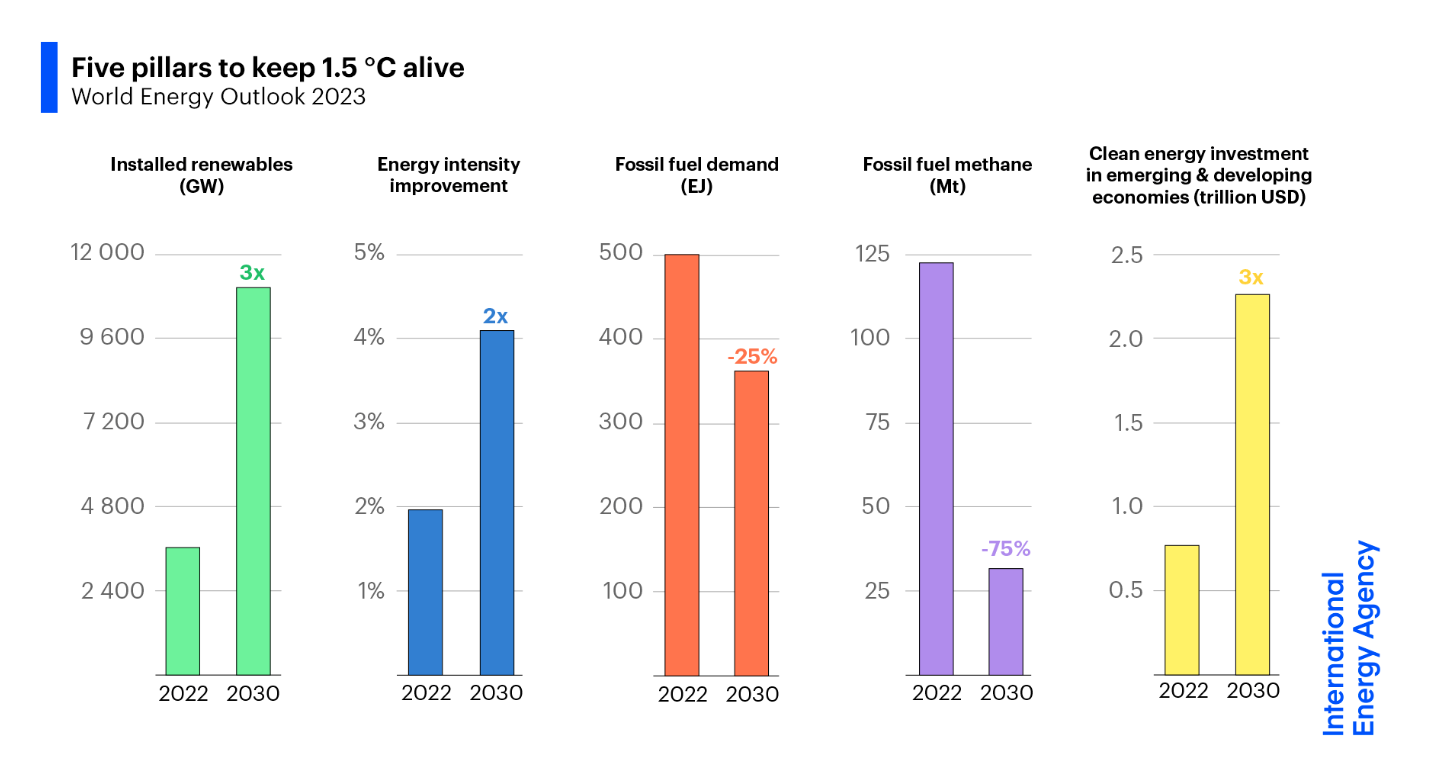
WEO 2023: The energy world is set to change significantly by 2030, based on current policy settings alone
24.10.2023
- Clean energy technologies will surge between now and 2030 based on today’s policy settings alone. By the end of the decade, there are set to be almost 10 times as many electric cars on the road worldwide. Solar will generate more electricity than the entire United States does currently, and renewables’ share of the global electricity mix will near 50%, up from around 30% today.
- In this scenario, the share of fossil fuels in global energy supply, which has been stuck for decades at around 80%, declines to 73% by 2030, and global energy-related CO2 emissions peak by 2025.
- Total energy demand in China, the world’s largest energy consumer, is set to reach a high around the middle of this decade as its economy slows and undergoes structural changes. Continued dynamic growth in clean energy will put the country’s fossil fuel demand and emissions into decline.
- Tripling global renewable capacity
- Doubling the rate of energy efficiency improvements
- Slashing methane emissions from fossil fuel operations by 75%
- Establishing large-scale financing mechanisms to support clean energy investments in emerging and developing economies
- Pursuing measures to ensure an orderly decline in the use of fossil fuels
